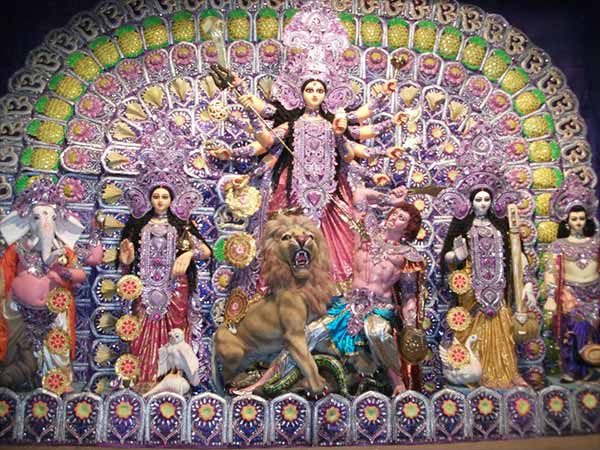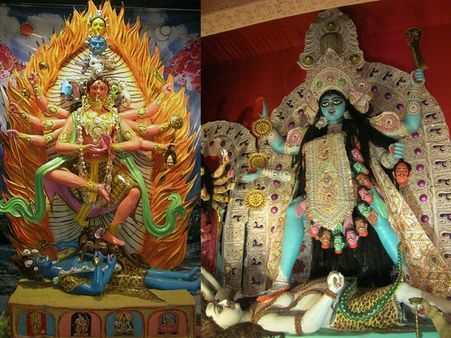Just In
- 6 hrs ago

- 7 hrs ago

- 10 hrs ago

- 10 hrs ago

Don't Miss
- Sports
 T20 World Cup 2024: Toss up between Sanju Samson and KL Rahul ahead of big selection meeting
T20 World Cup 2024: Toss up between Sanju Samson and KL Rahul ahead of big selection meeting - Finance
 IndusInd Bank Q4 Results: PAT Soars 15% To Rs 2,349 Cr, NII Climbs 15%; 165% Dividend Declared
IndusInd Bank Q4 Results: PAT Soars 15% To Rs 2,349 Cr, NII Climbs 15%; 165% Dividend Declared - Movies
 Dance Deewane 4: Madhuri Dixit, Suniel Shetty, Karisma Kapoor Dance On Chak Dhoom Dhoom With Chikoo, Bunty- PI
Dance Deewane 4: Madhuri Dixit, Suniel Shetty, Karisma Kapoor Dance On Chak Dhoom Dhoom With Chikoo, Bunty- PI - News
 Who Is Lisa Pisano, New Jersey Woman Gets Pig Kidney Transplant And Heart Pump?
Who Is Lisa Pisano, New Jersey Woman Gets Pig Kidney Transplant And Heart Pump? - Automobiles
 Royal Enfield Unveils Revolutionary Rentals & Tours Service: Check Out All Details Here
Royal Enfield Unveils Revolutionary Rentals & Tours Service: Check Out All Details Here - Technology
 Elon Musk’s X Is Launching a TV App Similar to YouTube for Watching Videos
Elon Musk’s X Is Launching a TV App Similar to YouTube for Watching Videos - Education
 AICTE introduces career portal for 3 million students, offering fully-sponsored trip to Silicon Valley
AICTE introduces career portal for 3 million students, offering fully-sponsored trip to Silicon Valley - Travel
 Escape to Kalimpong, Gangtok, and Darjeeling with IRCTC's Tour Package; Check Itinerary
Escape to Kalimpong, Gangtok, and Darjeeling with IRCTC's Tour Package; Check Itinerary
Gupt Navratri Begins Today; Know Benefits, Rituals & More
Here are certain benefits and rituals of Gupt Navratri, take a look.
Navratri is celebrated four times in a year. Two times, Navratri falls in the Chaitra and Ashwin months and is called Open Navratri or Pratyaksh Navratri. The other two times, Navratri takes place in the Ashadh and Magh months and is known as the Secret Navratri or Gupt Navratri. The festival is called Gupt Navratri because very few people know about it. The festival is mainly observed by the Sadhakas.

The most general practice that is observed during all the four times Navratri is celebrated is paying homage to the Goddesses Saraswati, Lakshmi and Durga. All the nine forms of Devi Durga are revered during the nine days of Navratri.

The Difference Between Pratyaksh And Gupt Navratri
Pratyaksh
Navratri
is
celebrated
with
a
huge
ceremonial
display
with
family
and
friends,
whereas
the
Gupt
Navratri
is
celebrated
in
a
secluded
way
only
in
Devi
Durga's
company.
The
Goddess
is
appeased
by
chanting
Tantra
Mantras
and
other
types
of
strong
invocations.
Gupt
Navratri
is
celebrated
in
the
month
of
July
(in
Ashadh
month)
as
well
as
around
February
or
March
(in
Magh).
It
is
also
a
nine-day
festival
just
like
the
Pratyaksh
Navratri;
however,
it
is
completely
dedicated
to
Devi
Varahi.

The Rituals Of Gupt Navratri
The
Gupt
Navratri
days
prove
to
be
very
promising
for
the
Sadhakas
and
Tantriks.
It
is
also
considered
to
be
auspicious
for
people
who
want
to
carry
out
particular
rituals.
Devotees
keep
fasts
and
chant
mantras
and
shlokas
to
appease
the
Goddess.
The
Goddess
also
listens
to
the
prayers
of
her
devotees
and
bestows
them
with
her
blessings.
The
Goddess
is
revered
in
3
forms
-
1)
Goddess
of
Knowledge,
2)
Prosperity
and
Wealth
Giver
and
3)
Remover
of
Immoral
Habits.
The
detailed
prayers
are
offered
to
the
Goddess
in
a
secret
way
during
all
the
9
days
of
Gupt
Navratri.
These
secret
chants
include
the
Durga
Saptashati
Paath
which
is
taken
from
Markhandeya
Puran.
These
chants
tell
the
legend
of
Goddess
Durga,
how
she
gained
the
powers
of
all
the
mighty
gods
to
battle
against
Mahishasura
(the
Demon).
The
mantras
also
narrate
how
the
Goddess
found
victory
over
evil.
Apart
from
Saptashati,
Devi
Mahatmya
and
Shrimad
Devi
Bhagvat
are
some
other
chants
that
are
practiced
during
this
period
to
invoke
the
Goddess.
The
Tantric
mode
is
the
most
famous
and
is
largely
practiced
during
the
Gupt
Navratri
period.


Benefits Of Gupt Navratri
The
following
are
the
main
benefits
of
Gupt
Navratri:
1)
Gupt
Navratri
is
celebrated
to
appease
Goddess
Shakti
and
the
Goddess
bestows
her
devotees
with
prosperity,
health,
wealth,
happiness,
knowledge
and
all
the
other
necessary
positive
energies.
2)
Devi
Durga
alleviates
the
pain
and
suffering
of
her
devotees.
3)
If
specific
rituals
are
performed
daily
together
with
the
Durga
Saptashati
chants,
it
is
believed
that
the
Goddess
shows
extreme
kindness
to
the
distressed
people.
4)
Gupt
Navratri
removes
all
kinds
of
fears
and
anxiety
and
the
devotees
gain
immense
confidence.
5)
The
most
famous
mantra
which
is
chanted
during
Secret
Navratri
is,
"Aim
Hreem
Kleem
Chamundaye
Vicchhe".
This
powerful
mantra
can
ward
off
all
kinds
of
evil
and
negative
forces
and
also
make
the
devotees
stress-free
and
fear-free.
This
mantra
should
be
chanted
a
maximum
number
of
times
to
reap
the
benefits.
Thus,
we
can
see
that
Gupt
Navratri
is
a
secret
festival
where
you
can
fulfill
your
specific
desires
by
chanting
specific
mantras.
The
most
sincere
followers
must
keep
fasts
for
all
the
nine
days.
Those
who
can't
fast
on
all
days
can
do
it
every
three
days,
like
on
the
first
day,
then
on
the
fourth
day
and
then
on
the
ninth
day.
Fruits
and
milk
can
be
taken
during
this
period.
Many
people
also
fast
on
the
first
and
the
ninth
day
of
the
Navratri.
-
 yoga spiritualityChaitra Navratri 2024 Day 9: Maa Siddhidatri Puja Vidhi, Vrat Katha, Mantra, And Aarti Lyrics
yoga spiritualityChaitra Navratri 2024 Day 9: Maa Siddhidatri Puja Vidhi, Vrat Katha, Mantra, And Aarti Lyrics -
 insyncBank Holiday On Ram Navami: Will Banks Remain Closed On 17 April 2024? State Wise List
insyncBank Holiday On Ram Navami: Will Banks Remain Closed On 17 April 2024? State Wise List -
 yoga spiritualityChaitra Navratri 2024 Day 8: Maa Mahagauri Puja Vidhi, Vrat Katha, Mantra, And Aarti Lyrics
yoga spiritualityChaitra Navratri 2024 Day 8: Maa Mahagauri Puja Vidhi, Vrat Katha, Mantra, And Aarti Lyrics -
 yoga spiritualityChaitra Durga Ashtami 2024 Wishes, Greetings, Messages, Images, Posters, Twitter, And Instagram Status
yoga spiritualityChaitra Durga Ashtami 2024 Wishes, Greetings, Messages, Images, Posters, Twitter, And Instagram Status -
 yoga spiritualityWhen Is Ram Navami 2024, 16th Or 17th April? Confirmed Date, Time, Auspicious Yoga And Worship Method
yoga spiritualityWhen Is Ram Navami 2024, 16th Or 17th April? Confirmed Date, Time, Auspicious Yoga And Worship Method -
 fashionChaitra Navratri 2024 Day 7: B-Town Beauties White Wardrobe Guide To Mark This Day
fashionChaitra Navratri 2024 Day 7: B-Town Beauties White Wardrobe Guide To Mark This Day -
 yoga spiritualityChaitra Navratri 2024 Day 6: Maa Katyayani Puja Vidhi, Vrat Katha, Mantra and Aarti Lyrics
yoga spiritualityChaitra Navratri 2024 Day 6: Maa Katyayani Puja Vidhi, Vrat Katha, Mantra and Aarti Lyrics -
 yoga spiritualityChaitra Navratri 2024 Day 5: Maa Skandmata Puja Vidhi, Katha, Mantra And Aarti
yoga spiritualityChaitra Navratri 2024 Day 5: Maa Skandmata Puja Vidhi, Katha, Mantra And Aarti -
 beautyChaitra Navratri 2024: 7 Mesmerizing Makeup Ideas To Ace Your Festive Look
beautyChaitra Navratri 2024: 7 Mesmerizing Makeup Ideas To Ace Your Festive Look -
 beautyChaitra Navratri 2024: Captivating Maa Durga Tattoo Designs To Flaunt Your Devotion
beautyChaitra Navratri 2024: Captivating Maa Durga Tattoo Designs To Flaunt Your Devotion -
 yoga spiritualityChaitra Navratri 2024 Day 4: Maa Kushmanda Puja Vidhi, Muhurat, Vrat Katha, Mantra And Aarti Lyrics
yoga spiritualityChaitra Navratri 2024 Day 4: Maa Kushmanda Puja Vidhi, Muhurat, Vrat Katha, Mantra And Aarti Lyrics -
 fashionChaitra Navratri 2024 Day 4: Green Traditional Outfit Ideas To Represent Day 4 Festivities
fashionChaitra Navratri 2024 Day 4: Green Traditional Outfit Ideas To Represent Day 4 Festivities


 Click it and Unblock the Notifications
Click it and Unblock the Notifications



